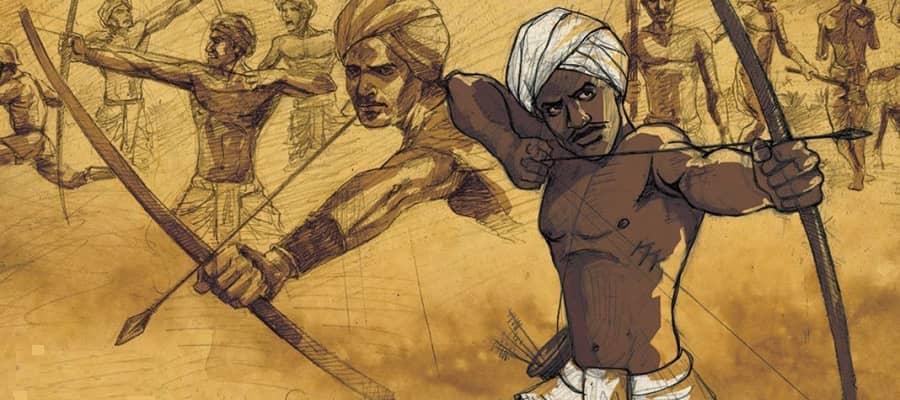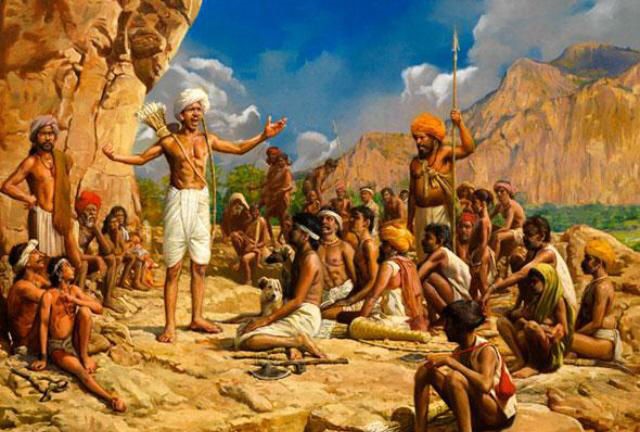There were many large scale revolts and rebellions were reported as soon as East India Company starts gaining political and administration rights in Bengal and the rest of the other states of the Indian subcontinent. Starting from peasants and sanyasi revolts from 1770-1800 to the revolt of 1857, there were many instances where the company had to face disapproval from the native citizens in the form of armed rebellions. Even after 1857, when the company ruled got ended and British crown rule was established in India, there were many rebellions were reported across the country.
By the opening decades of the 20th Century, awakening among peasants had increased instead of fighting in revolt they started fighting through organization & movements. In 1918, UP Kisan Sabha formed by Gauri Shankar Mishra and Indra Narayan Trivedi. In 1920, Awadh Kisan Sabha formed by Gauri Shankar & Baba Ramachandra. In 1921, the Ekta movement was started by Madras Pasi. In 1926, all Indian Kisan Sabha was started by Shahjanand Saraswati.
Why did Revolts & Rebellions take place?
The factors responsible for this Revolts & Rebellions were inherent to the character of the British Rule. Colonial Imposed through military, despotic, racist, unethical & immoral, guided by the profit motive, Imperialistic, insensible – exploitative, and aliening (beyond the comprehension of India).

The establishment of British Rule in India adversely affected every section of the population. Land Revenue settlement imposed by the British converted Indian peasant providers into landless tenants cultivators. An extremely heavy burden of land revenue was imposed on the peasantry. They were left at mercy of nature. No surplus of any kind was left with them. The tribal institution & practices were destroyed by the British by imposing new socio-cultural & political ideas. Their rights over forests were curtailed (through the forest act 1865 & 1927). Their religious custom was suppressed & their independence was taken away tribal revolted.
A number of Native State annexed to create the British Indian Empire, other Native Rulers were subjugated by imposing instruments like a subsidiary alliance. All the higher offices were reserved for Europeans the charter act 1793 provided that every office having 500 pounds/month & above shall be reserved for European. Discontent produced by this adverse impact of British Rule busted out in open in recurring Revolts & Rebellions.
Nature and Character of Peasants & Tribal Revolt
During the history of British Rule in India, 100s of revolts & rebellions took place. Most of these revolts involved peasant & tribal groups. These revolts enjoyed a place of great significance in the history of the modern age. The peasant & tribal were a reaction to British Rule because the establishment of British Rule had adversely affected the social and economic, cultural & political life of the tribal group.
Peasant & tribal revolt were localized in character the causes were local & geographical spread were also limited. These revolts were unplanned most of these were sudden outbursts of discontent prevailing among the masses. These Revolts & Rebellions were violent in nature. Among peasant & tribal revolts as well, the tribal revolt was for more violence.
Tribal didn’t have access to any peaceful means to retreat there. They couldn’t approach officials & file cases in court. The level of education & awakening was very low. The fear among tribes was much higher because they had living life of isolation from mainstream society. Peasant & tribal revolts represented history from below. In contrast with the history of the above (significance act of elite class) such as king, courtier, landlord, & Nobel, etc.).
The Subaltern approach of the study of Indian history (founder Ranjit Guha) focused upon the contribution of common masses in making of Indian history. Peasant & tribal revolts were backward-looking because rebels wanted to clock back to old age. They wanted to reverse changes. These peasant & tribal groups didn’t have a vision of a better & brighter future. These peasant & tribal revolts were a failure in an immediate sense because all of these were brutishly superspy by the British. But at the same time, it must be emphasized that the efforts of peasant & tribal revolts didn’t go waste completely.
These revolts established a tradition of opposition to foreign rule. This tradition continued to gain strength with the passage of time. These revolts established a tradition of making a sacrifice by raising voice against exploitation & suffering. Since revolt couldn’t succeed, discontent continued to accumulate among the masses & the intensity of revolt continued to increase with the passage of time. This tradition started by peasant & tribal revolt prepared for the great revolt of 1857.
Changes in Character of Peasants & Tribal Revolts
Till 1858, peasant & tribal revolt mostly represented sudden outbursts of people against the immediate instrument of exploitation. Target wasn’t British Rule, the money lenders/landlords who were exploiting the peasants & tribal were attacked.
The outsiders were targeted because their entries in tribal areas had resulted in the sufferings of people. The violent act was the most common form of protests. After 1858, a significant change was witnessed in the nature & character of peasants & tribal revolt. Many peasant groups revolted with the slogan that they want to become a citizen of the Queen. These groups were under the impression that direct British Rule would eliminate their sufferings. Bumming of records maintained by landlords & money lenders was a common form of protests.
The peasant leaders organized peaceful sitting against their suffering. Landlords & money lenders were dragged to court. Applications were filed with officials to get justice. During the opening decades of the 20th century, the peasants started participating in the mainstream National Movement. Peasant organizations like UP & Awadh Kisan Sabha, Ekta movement, AIKS emerged. Peasant groups came under influence of socialism & they started demanding complete over holing of the existing social-economic structure.

